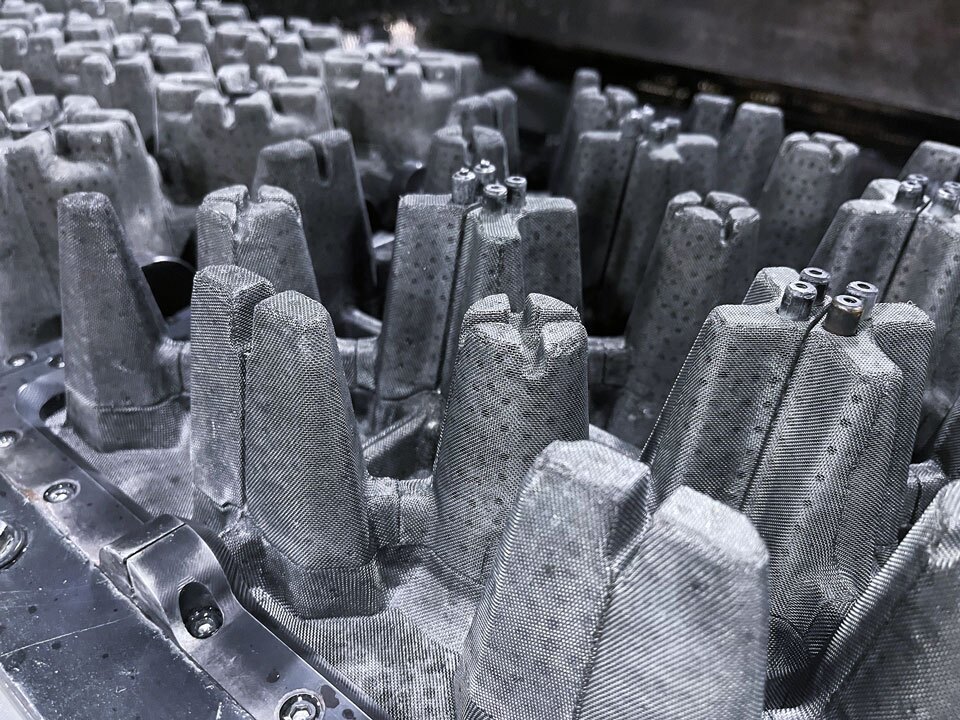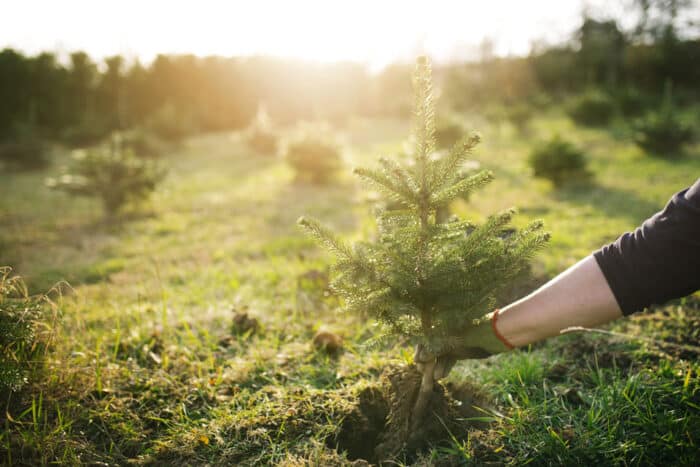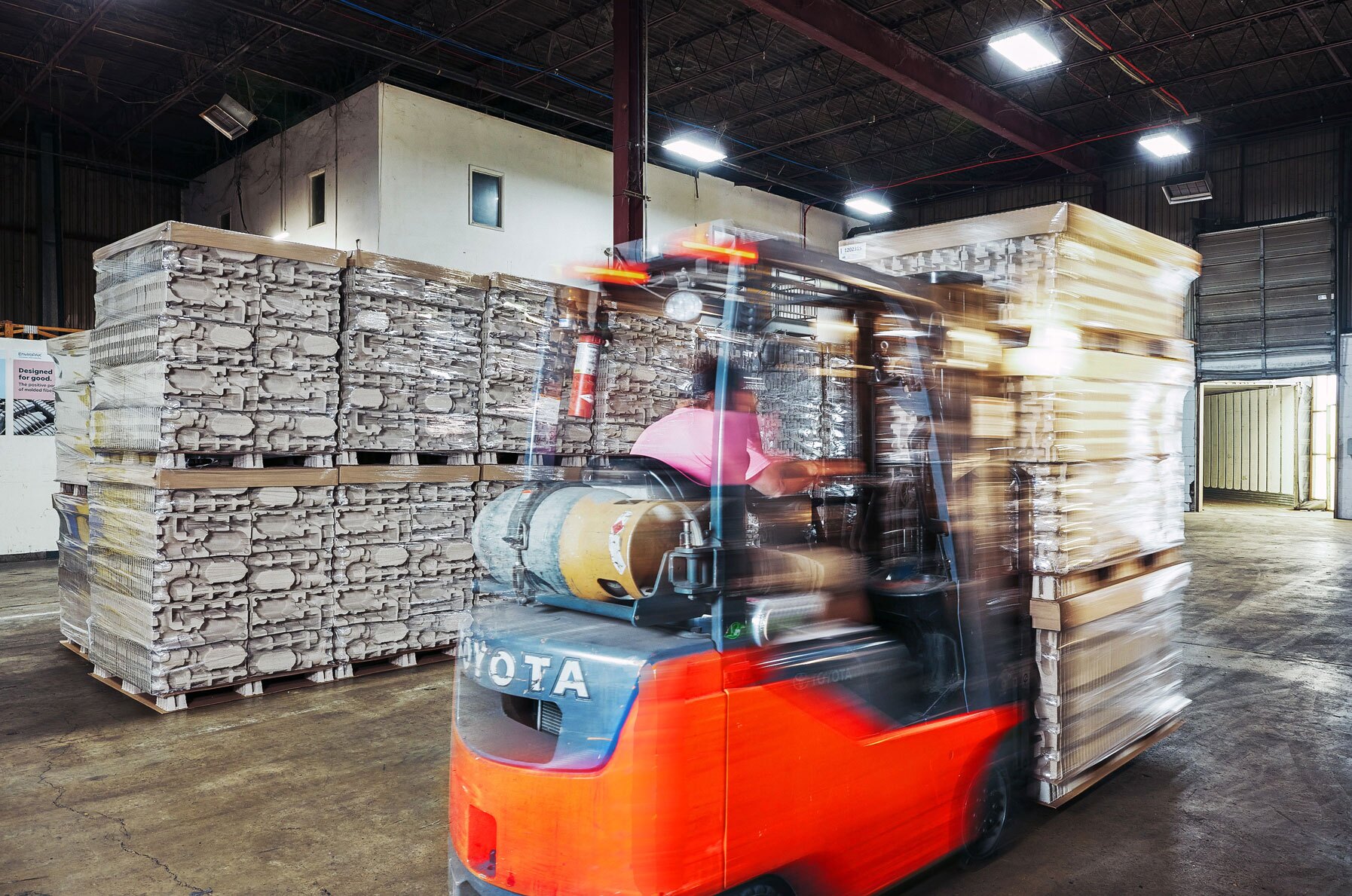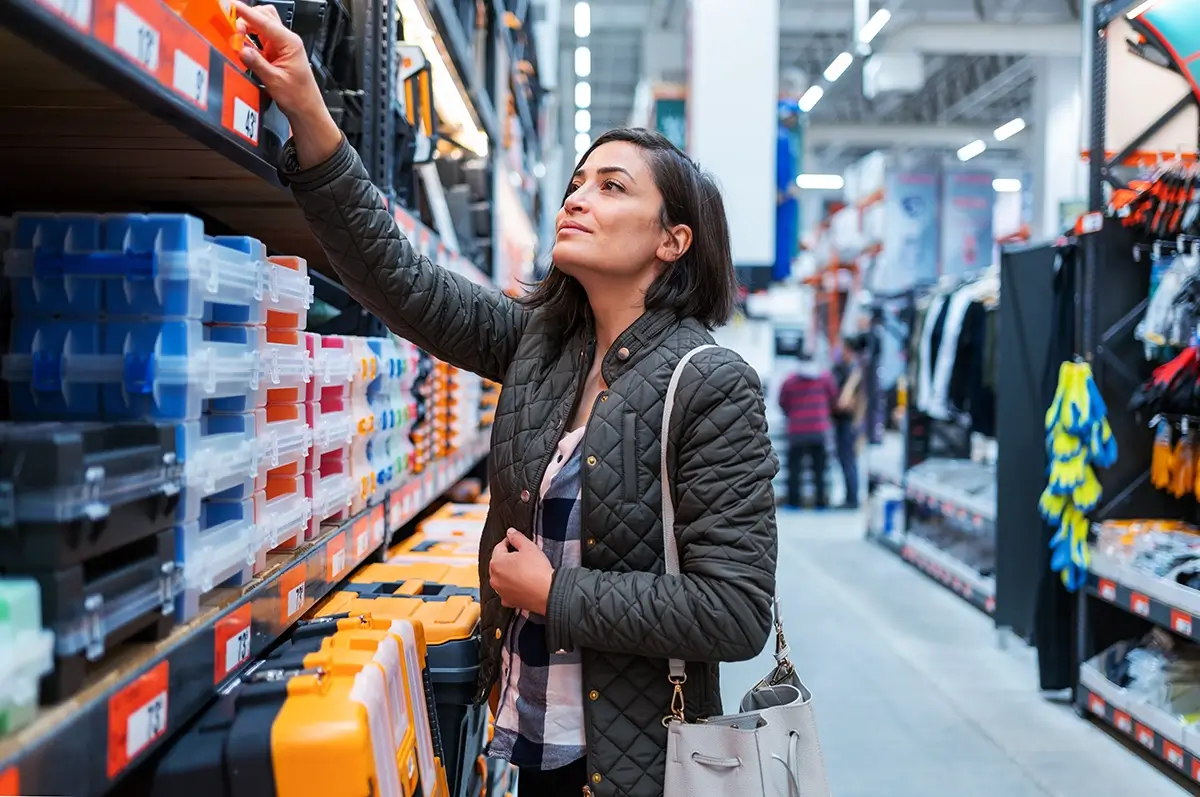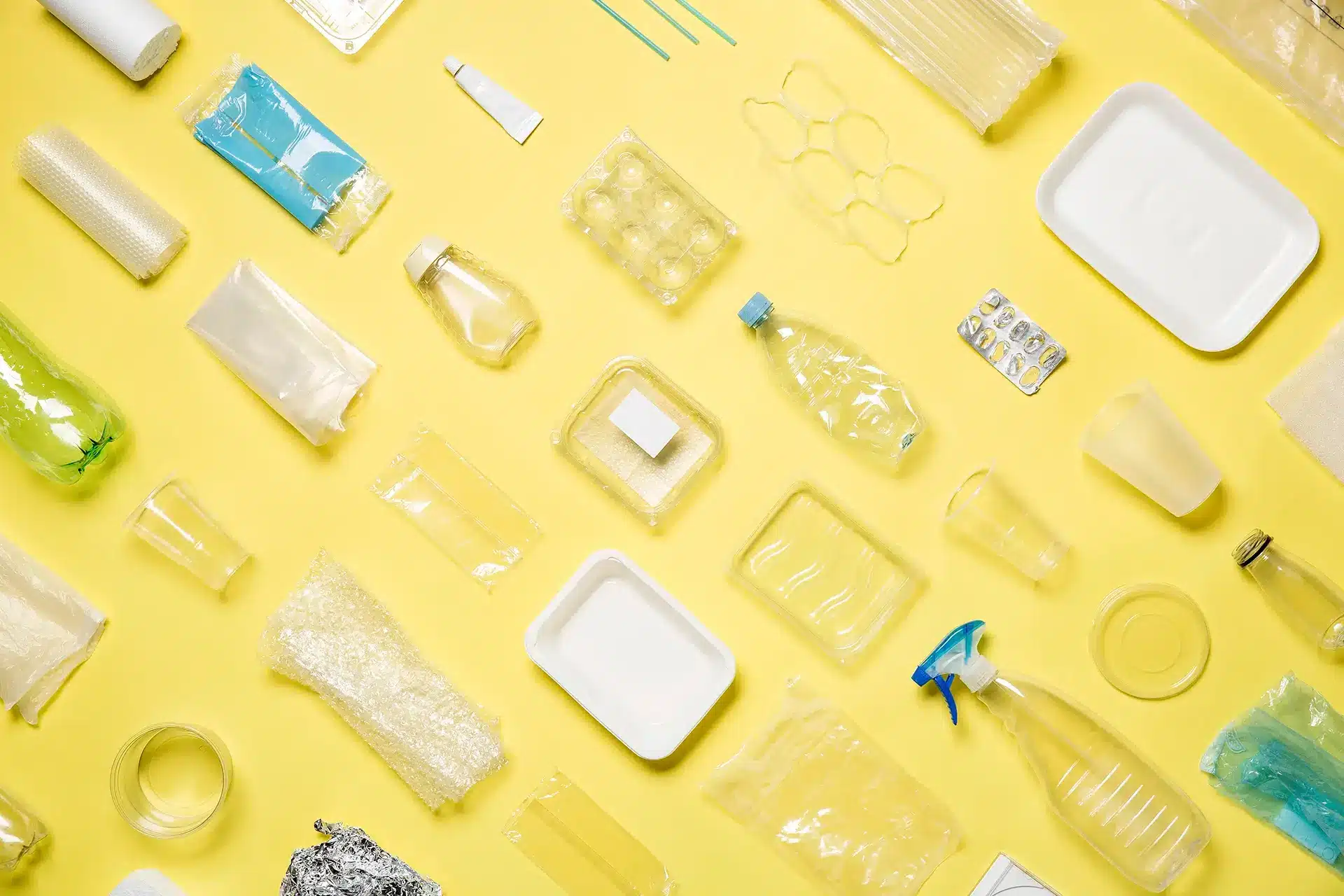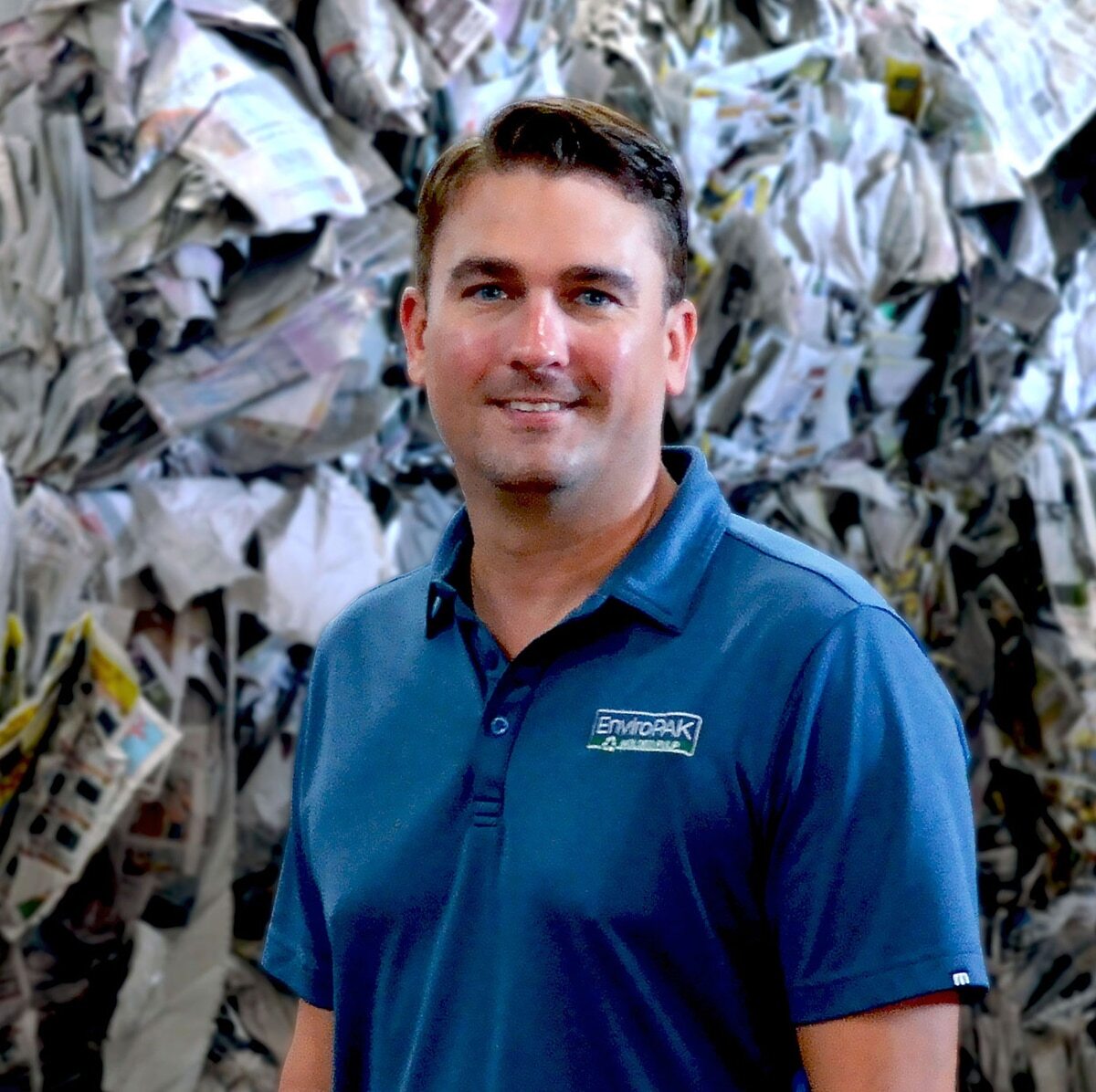How did we get to the point where throwing away something like plastic packaging is a common occurrence in everyday life? Where are we heading as a planet where plastic packaging is seen as having a linear life, not a circular one? And why haven’t all the corporate and government efforts to recycle plastic made more of an impact?
Did you know?
- Every 15.5 hours, Americans throw out enough plastic to fill the Dallas Cowboys NFL stadium
- Seven states are projected to run out of landfill space in the next five years
- The United States will run out of existing landfill space in the next 60 years
- 11 million metric tons of plastic enter the ocean every year
- Humans can ingest enough microplastic plastic in one week to equal the size of a credit card
Maybe the solution to these challenges is already taking place as product brands are replacing plastic with a more sustainable solution such as molded fiber packaging. Let’s take a look at why this sustainability mindset is gaining traction among brands and their consumer base.
Consumers: The change agents for product brands.
It’s no secret that a one time purchase by a consumer is not a revenue generation stream for a product brand. What companies seek out is the buying power of long-term loyalty to sustain sales and even achieve new growth. And the product packaging can literally be the sales lifeline that makes this possible.
A countless number of brands are competing for a point-of-difference impact that only packaging can make to drive consumer purchases. And while packaging design can influence a purchase decision, the opposite can happen if the packaging material doesn’t appeal to the buyer’s aesthetic needs as well as their life values.
This is where sustainable packaging vs. plastic packaging becomes a real game changer for consumer brands.
Here forever? The plastic packaging dilemma.
It’s one of the most common scenarios that happens after purchasing a product that utilizes plastic packaging. The packaging is thrown away. Estimates from the U.N. Environmental Program indicate that since 1950 there have been 9.2 billion tons of plastic produced, of which only 9% has been recycled properly.
The rest of the discarded plastic ends up in landfills, dumps, uncontrolled or mismanaged waste streams, or natural environments such as lakes, rivers, and oceans. One reason for these numbers is that nearly a third of all plastic packaging is not available for recycling. And since plastic isn’t biodegradable or compostable (unlike paper-based molded fiber), every piece of plastic ever made is still on this planet.
That’s the “forever dilemma” with plastic packaging.
“Plastic, which is made from oil and gas, is notoriously difficult to recycle. Doing so requires meticulous sorting since most of the thousands of chemically distinct varieties of plastic cannot be recycled together. That renders an already pricey process even more expensive. Another challenge: the material degrades each time it is reused, meaning it can generally only be reused once or twice.”
Society of Environmental Journalists
Add to this plastic recycling pitfall is how the chemical composition of differing plastic packaging materials can prevent recycling.
“Products made of a single type of plastic often cannot be recycled together because they include different chemical additives or colorants. For example, PET is widely accepted by municipal recycling programs, yet PET bottles cannot be recycled with PET clamshells and other thermoforms, which are made from a PET material with different chemical properties.”
Center for Climate Integrity
The positive side of packaging: Sustainable material.
There is a driving factor that is causing a shift from the use of plastic packaging with its “one and done” life: Eco-conscious consumers. These green mindset buyers throughout the world are distancing themselves from this “plastic throwaway economy” as they seek out product brands that are moving toward a sustainable circular economy.
By having a circular economy mission, product brands are setting achievable goals to reduce their dependence on the planet’s finite raw material resources; while lessening the negative impacts on the environment. And what’s good for the planet is also good for increasing sales revenue.
“67% of American consumers say paper-based packaging makes a product more attractive than other packaging material.”
Medium
There seems to be no end in sight to the growing consumer demand for brands to replace plastic packaging with sustainable alternatives such as compostable and biodegradable molded fiber. Toro, L.L.Bean, Patagonia, Moen and Nike’s “Move to Zero” – these are just a few of the countless major brands with sustainability missions for their products and the product packaging where molded fiber is an ideal choice.
Retailers where these products are being sold are also demanding this change to sustainable packaging. You see it with Target, Best Buy, Home Depot, and especially Wal-Mart with its massive push to be Net Zero by 2040 and for all of their private-brand packaging to be recyclable, reusable or compostable by 2025.
The demand for eco-friendly packaging is driving a surge in demand for molded fiber. According to recent data from Research & Markets, the molded fiber packaging market is expected to grow from $13.3 billion in 2023 to nearly $18 billion by 2028.
Packaging 101: Functional. And environmental.
There are multiple reasons why brands place such a high value on their product packaging. It needs to be engineered to be functional as well as provide protection during shipment and on the store shelves. And it must look great. They are also placing emphasis on sustainability as seen for years with Pangea, a cosmetics Brand that embraces molded fiber packaging.
“Sustainable packaging isn’t a new development for this Boulder, CO-based personal care brand; Onysko has been pursuing ways to purge packaging waste for years. In 2008, for example, Pangea was featured in Happi for its plantable molded fiber boxes that grow into spruce trees. Two years later the company unveiled a glue-free origami-style folding box made with recycled paper and vegetable inks.”
Happi Cosmetics Magazine
Early on Pangea understood there was a shift in consumer buying behavior toward more green product lines. Sustainable molded fiber packaging was the best choice for this product’s presentation and for appealing to the eco-minded consumer.
The interesting aspect of Pangea’s sustainability efforts is how their actual cosmetic products are housed in completely plastic free packaging containers. “It took 29 months to achieve this,” according to Pangea CEO, Joshua Onysko. But he considers it well worth the time and financial investment for his customers, sales, and the future of our planet.
“The cosmetic industry contributes 100 billion pieces of plastic to our earth every year. I believe it is our responsibility to create solutions and provide consumers products that eliminate the use of plastic packaging. When you choose Pangea, you’re not just selecting a skincare product, you’re embracing a lifestyle of conscious choices.”
Joshua Onysko, Founder & CEO, Pangea Cosmetics
Earlier this year the company rolled out a skin care collection housed in completely plastic-free packaging, including custom aluminum caps. The collection spans from cleansers and moisturizers to masks and exfoliators.
We can all look better and feel better about making environmentally friendly product choices. And it’s easier than ever to do with so many brands going green.
Contact EnviroPAK® to learn why custom molded fiber packaging is the positive, sustainable direction for the environment and the products your customers demand in 2024 and beyond. Our molded fiber packaging is made from 3,500 tons of recycled paper yearly. And it’s the ideal sustainable, biodegradable, and compostable solution to protect your products and your brand image with consumers.


